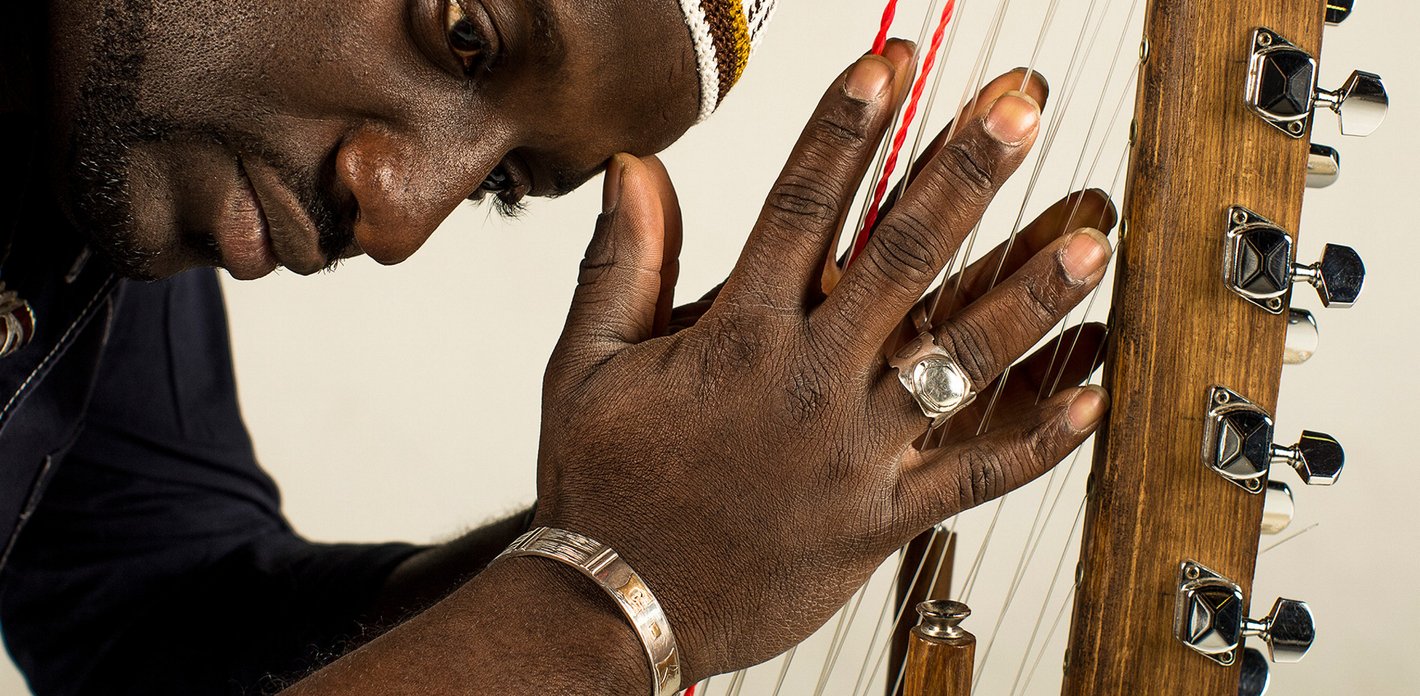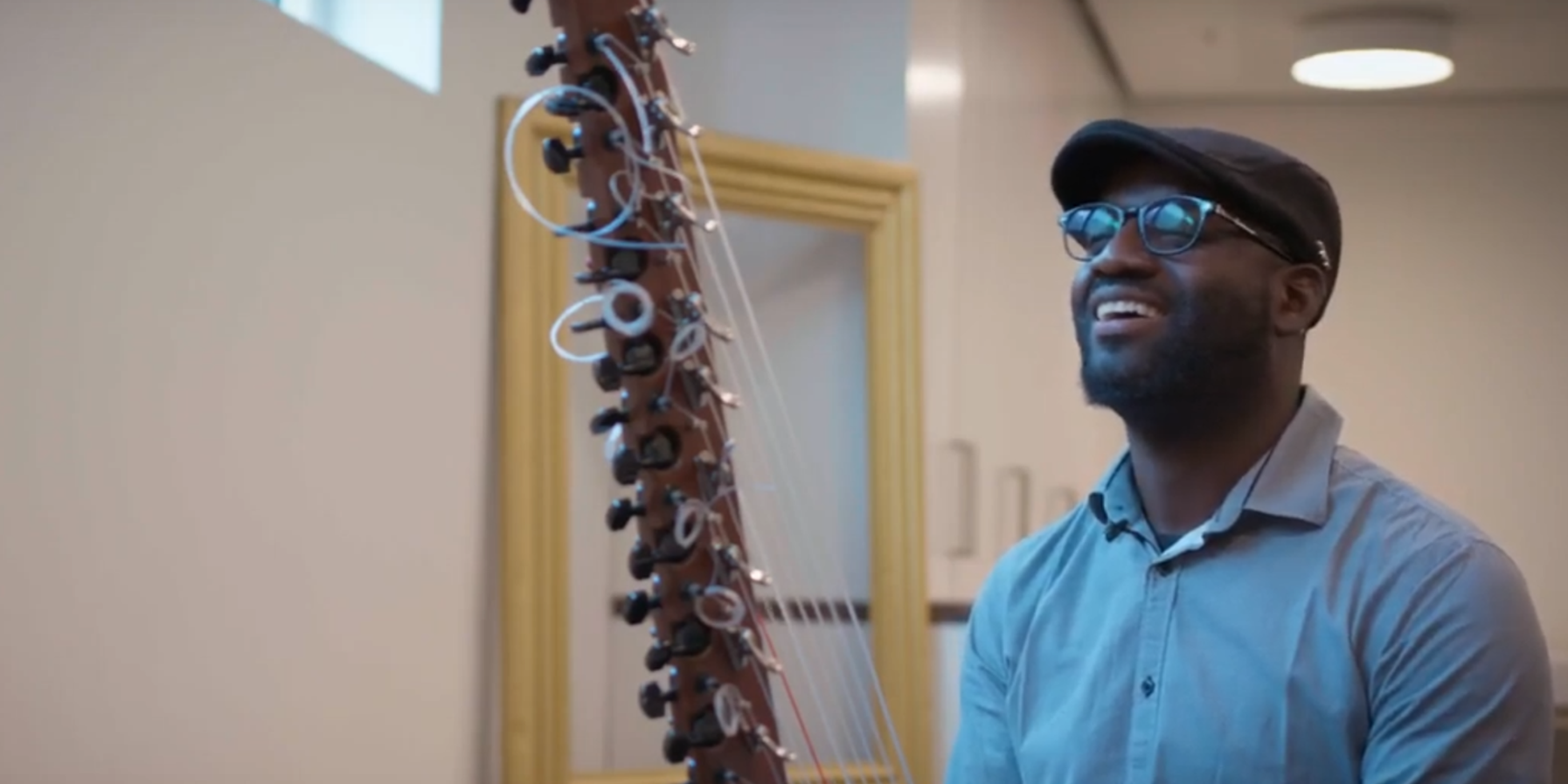The sound of the kora :Seckou Keita explains his instrument
-
About Seckou Keita
Seckou Keita is one of the great master drummers and kora virtuosos. Born in the Casamance region of southern Senegal, he grew up with the 700 year-old art of the erstwhile kingdom of Gabou and of the griot clans Cissokho and Keita – it is from the latter that he takes his name. He taught himself to play the kora at a young age, and evolved a style that flows freely between traditions from Guinea to Mali, also embracing aspects of European folk music and jazz.
It wasn’t long before his talent took him out into the wide world: he has played alongside Welsh harpist Catrin Finch and the Cuban jazz musician Omar Sosa. But the heart of Keita's work remains the solo playing of the griots as once performed for sovereign rulers – that, and gentle modifications adapting it to the here and now.
»An utterly magical sound!«
Mark Radcliffe (BBC Radio 2)
Description of the kora
Construction: Half a calabash (a type of gourd), covered with cowhide or antilope hide, on which is mounted a long bridge with between 21 and 25 strings: these are the components that make up the harp-lute kora. The strings used to be made of hide as well, but nowadays they are usually made of nylon.
How is it played? By plucking the strings, both chords and fast melodies can be played. There are two styles of playing the kora: the western style tends to be percussive, featuring many rhythmic elements, while the eastern style is slower and stately in character.
Development: The kora is a typical instrument used in the West African griots. The term denotes professional singers, poets and musicians from Mali, Senegal and Guinea whose most important task is to hand down stories – thus the kora player often sings as well. The kora was originally played at royal courts, but went on to achieve wide dissemination.





